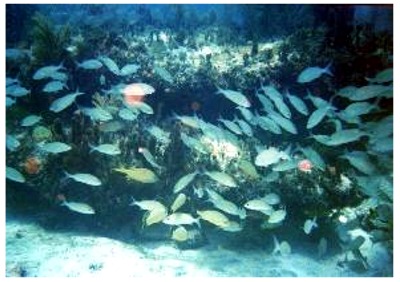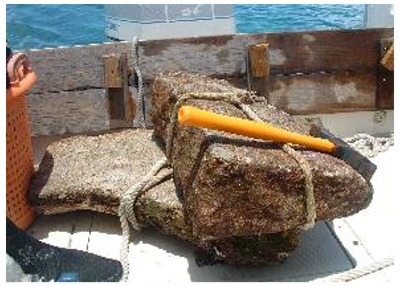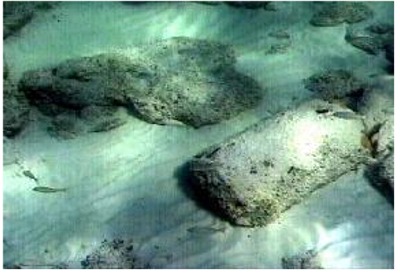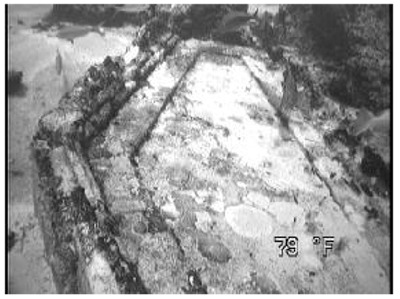Apocalypse or Paradise?
History Unveiled – Odd Gods for Sod Bods
History Unveiled – Odd Gods for Sod Bods
The snake venom bursts through my bloodstream and floods my brain with psychedelic visions and death-trip memories and projections. My resourceful body attempts to integrate the primordial serpent proteins into the trance-substantial substance of its standing wave.
Unaware of the snakebite affecting my body and consciousness, O’Grady nonetheless ‘coincidentally’ attempts to make up the difference in psychic potential by consuming a small handful of dried blue meanies – an extraordinary synchrony of expanded consciousness during the extended moment of the new moon’s voided momentum.
Unaware of the snakebite affecting my body and consciousness, O’Grady nonetheless ‘coincidentally’ attempts to make up the difference in psychic potential by consuming a small handful of dried blue meanies – an extraordinary synchrony of expanded consciousness during the extended moment of the new moon’s voided momentum.
He and Molki sit in the wooden Pentagon and the words circulate between us as I ride out the easily distanced waves of pain and desperate cogitation as the peak of the toxic rush approaches. This Hermetic Hermit is glad of the release that comes with uncorking the bottle of the genie dwelling within him, and words pour from my mouth in an almost unstoppable flood in the brilliant fluorescing darkness beneath the encircling canopy of stars.
“You have to view the solar system as an integrated whole – the Sun-disk is a positive pole of a system in which the planets are all negatively-charged capacitors, all inhabiting harmonic shells within the charged plasma of the ‘solar bubble’. The thin dielectric medium of so-called ‘empty space’ is becoming more highly charged – some believe that this rise in solar activity and background potential – in which the Earth, Mars and Jupiter can all be seen to be warming – is due to the return of the Sun’s companion, approaching through the solar bubble of the Sun’s vast atmosphere.
The increase in solar activity is expected to result in a surge that destroys all the satellites orbiting the Earth and cooks all the integrated circuits on the surface of the globe. No planes, no cars, no communications, no technology – no food in the supermarkets or water in the tap and only your feet to get you anywhere.”
“When?”
“Many expect the Great Ages to change when the so-called Mayan calendar ends on the Solstice in 2012 – but as the destructive vengeful Lord remarks in the old books – ‘No man may know the day of my coming – I come like a thief in the night.’ I’ve heard some women optimistically emphasise the word ‘man’ and perhaps miss the point entirely; or maybe not – Gaia has a long memory that can be tapped, and her insights are more trustworthy than the codified words of the priests of the Sky God.
But the ‘thief in the night’ reference pertains to a deity other than the Earth or the Sun – the Sun is the ‘good shepherd’ of all the gods and goddesses, the planets and moons and all who dwell on them. The thief in the night comes out of the darkness of the abyssal depths of the Great Water between the stars – an extremely elliptical companion to the Sun, accompanied by a wandering pack of unpredictable, eccentric rogues.
The companion is variously known as Planet X, Nibiru to the Sumerians, Marduk to the Babylonians, also known as Maldek, Nemesis or the ‘Tenth Planet’ – and often confused with another destructive wandering body. All the planets are gods and goddesses, remember – including the ‘Lord’, the ‘high sky god’ of the Hebrews – who hasn’t manifested for quite some time.
“That’s why the wiser teachers say ‘Don’t look forward to the Day of the Lord’, for that day is the day of doom and destruction, the end of the world as we know it.”
“So ‘the Lord’ is a large planet that passes through the solar system? Why can’t we see it then?”
“It’s a faint ‘brown dwarf’ star, and it’s pretty hard to see anything of that order of magnitude unless you’re looking right at it. It comes with a coterie of smaller orbiting bodies, moving in retrograde motion to the rest of the solar system; it’s closest approach approximates the orbital shell of the so-called ‘asteroid belt’.
“Why ‘so-called’?”
“Because there’s more than the one asteroid belt we were taught about in the schools of the last millennium, when science chose to believe that the solar system was stable and inherently safe; governed by Newtonian clockwork, nothing had changed substantially for at least three billion years. Everything had stabilised a long time ago and life on spaceship Earth was thought to be subject only to glacially slow change – not catastrophic bouts of sudden transformation resulting in a ‘new heaven and a new Earth’.
“Then the ‘string of pearls’ – a cometary chain that could have easily destroyed the Earth – hit Jupiter a decade ago and astronomers suddenly realised that the gas giants hadn’t already swept up all the debris we might encounter after all. We’re not sailing through an empty cosmos after all. Beyond Neptune for instance is another asteroid belt that contains lots of big stuff, far more material than the belt between the orbits of Jupiter and Mars – which contains only enough material to account for something far smaller than the Earth; only enough debris to make a moon or ‘dwarf’ planet; but it’s all actually debris from a past planetary collision.
“We were taught that most of the material in the solar system exists on the plane of the ecliptic – except for Pluto, whose unusual orbit is heavily inclined to the plane traversed by all the other familiar planets and the asteroid belt between Jupiter and Mars. Now Pluto is classed as a ‘dwarf’ planet, a possible escapee from Neptune or the ‘Nereid’ belt beyond Neptune – and there are many more bodies of similar size orbiting around the Sun outside the ecliptic, some on extremely elliptical paths that follow and inhabit high harmonics instead of circular paths.
“According to the Sumerian texts (as interpreted by Zachariah Sitchin), Pluto is actually an escaped satellite of ‘Planet X’. It’s widely recognised that something turned Uranus on its side and radically altered the orbits of Neptune’s moons; something of an order of ten times the mass of current-day Jupiter…”
“Bigger than a dwarf planet, then – as big as a dwarf star. How many of these dwarf planets are there?” Molki asks, patting her pregnant belly.
“The more we look, out off the well-examined plane of the ecliptic, the more we see. Have you heard how Pluto was discovered?”
“No.”
“Percival Lowell, the Astronomer Royal of Britain, noticed along with many others that something seemed to be perturbing the moons of the outer gas giants. He decided that they must be influenced by a large body and calculated where such a thing might be found.
“In the early 1930s Clyde Tombaugh duly swung the big British scope that way and exposed a couple of glass photographic plates – that showed a ‘wandering’ body in precisely the location Lowell had predicted. The field of the telescope’s view was a tiny, tiny segment of the sky and he found Pluto amazingly quickly. That’s why its old planetary symbol was ‘PL’ – it stood for ‘Percival Lowell’, not ‘Pluto’ – an interesting (and perhaps contrived) coincidence in itself. Pretty good science, huh?” Molki and O’Grady smile.
“The only problem was, Lowell’s calculations were reexamined in the 1960s – by which time we had a reasonable idea of Pluto’s actual size and location – and it was discovered that there was no way that something of that apparent mass could possibly be perturbing the outer moons of the gas giants.
“So did Tombaugh actually find Pluto by accident? Do you know what the odds are against that happening? For a start, something is undeniably perturbing the moons of the gas giants, after all. We’re left with at least a couple of interesting possibilities; either there’s something else out there, something big; or Pluto – which we’ve only been examining for a fraction of the time it takes to orbit the Sun – is a hell of a lot more massive than it should be.”
Molki leans forward. “So which is it?”
“Well the recent passages of our solar system-exploring satellites would have been expected to find major gravitic anomalies if Pluto had any; but maybe not. And Pluto failed to reach its perihelion – its closest approach to the Sun – at the predicted time a couple of decades back; but it did begin to swing out again a little later…
“Anyway, the real point is that the solar system has been traveling around the galaxy for a long, long time and it swims in and out of the galactic plane in a sine-wave. When we pass through the centre of the plane of the Milky Way we encounter a lot of crap, and larger things besides…”
“So this brown dwarf is coming back?”
“Maybe – but as the old babbling books also say, ‘My time has been foreshortened’ – which is to say that throughout the Great Ages recorded by the Maya and others, the cycles of return of the Great Slayer were regular and predictable; but during the last passage a close interaction with another body altered is orbit in unpredictable ways.”
“So it may miss us entirely?”
“The main danger to Earth is not the passage of Nemesis, but the piles of rock and metal and frozen fossilised biosphere that tumble toward us every time it passes through a debris field – through the asteroid belts or Oordt Cloud that surrounds the solar system. That’s what happened to the planet where the asteroid belt is now…”
“Hit by the brown dwarf?”
“The ancients say that the asteroid belt planet was actually struck by one of the orbiting companions of the elliptical dwarven star; the crust was torn from the planet and mingled with the shattered remnants of the satellite that struck it to form the asteroid belt and many of the comets. Some called that ancient unfortunate planet ‘Ichthus’, a gateway to the multiverse that glowed more brightly than any other star or planet in its day. It was the original Lucifer; it glowed in the night, self-illumined by amazing aurorae, and it was inhabited – a liquid planet whose fluids were held in semi-miraculous suspension, the Pearl of Great Price, a planetary crystal ball that was older than the solar system and a gateway to everywhere.
“It’s a very long story. This happened when the dinosaurs were blotted out, and the planet that resonated with the structure of the physical Third Eye in terrestrial organisms was shattered; the third eye shrank and slipped within, except in certain ‘living fossils’ like the Tuatara of New Zealand…”
“The asteroid belt is the other shattered intruding satellite, and the crust of the planet that was once there, you say – but what happened to the core?”
“The core wandered through the solar system in an extreme elliptical orbit for a long time, until it interacted with Jupiter and was thrown back into the plane of the ecliptic. It interacted repeatedly with the inner planets, tearing the biosphere off Mars in repeated passages and destroying each Earthly civilisation that arose in a roughly 7,000 year cycle. ‘Planet X’, the brown dwarf Nemesis, has a different cycle again. There was also a three and a half thousand year cycle that created lesser tides of destruction in a disharmonic resonance…”
“And where is the rogue core of the asteroid planet now?” O’Grady asks.
“Now it’s the planet with the most circular orbit of all, the brightest planet in the sky – Venus, with land tides of tens of feet, no stable crust, a sulphuric brimstone atmosphere, pools of molten metal and a surface temperature of 438 degrees Celsius - that certainly can’t be accounted for by a ‘runaway greenhouse effect’! It unaccountably rotates in reverse direction to all the other planets and the unexpected velocity of its upper atmosphere shows signs of recent stabilisation. Just this week a scientist has published a report indicating that Venus must have been created in a large planetary impact – no mention of Immanuel Velikovsky, of course – he’s been virtually erased from history…”
“And it’s an interesting point that the word ‘Venus’ means ‘the one that arrives,” O’Grady points out. “Why would you call a planet ‘the one that arrives’?” I pin him between the parallel lances of my venom-blurred vision.
“I thought I as the only one who noticed that,” I say. “The simple and obvious fact that ‘Venus’ is Latin for ‘she who comes’ – or ‘he’ or ‘it’.”
“Ah,” O’Grady concedes, “I think it was you who mentioned it to me when I was here all those years ago.”
“Excellent memory.”
“So the cycle of destruction has ended?” Molki asks.
“Yes and no – the pathway once inhabited by proto-Venus – or ‘Ichthus’, or ‘long-haired Lucifer’, the light-maker – is still accompanied by her handmaidens – large masses in the order of, say, Phobos and Deimos, the moons of Ares-Mars – which was pulled along in Venus’ train and for a time was very close to the Earth – as close as the Moon. It was inhabited as well, another long story…”
O’Grady takes a deep draw and asks his next question through a cloud of smoke. “So these rocks that are still flying around in Venus’ old orbit are dinosaur killers? Miles across?”
“Some – but most are smaller, and they aren’t all rocky. You see, the real point is that all the bods in the know are intending to ride out five years of potential planetary destruction in their underground arks and military bases and refuges – but they don’t know what’s going to happen. Maybe nothing will happen – or nothing they expect. The cycle that the old Illuminati guarded for millennia between catastrophes in their codices and coded religions has changed. Venus has only been in its current orbit for less than three thousand years. The rocks may miss us entirely and we’ll have to cope with not dying – which is a much more difficult scenario than planetary megadeath; it means we have to somehow clean up the mess and work out how not to suffocate in our own shit!
“Besides, as Ben Elton (the ‘son of the Elohim) points out, the very worst place to be at a time like that would be inside a sealed bunker or spaceship with a bunch of hideous militant power mongers and control freaks…”
“So nothing may happen after all?”
“That’s right – and whatever happens, we’ll be responsible for creating it because we really do create reality with our emotion-charged hopes and fears; life alters the apparently random odds of reality, and that’s all it takes for life to survive against the odds. If enough people can dream of a future then we’ll all get to have one – we’ll steer a course between the flying rocks, as we do every year.”
“Every year?”
“There plenty of near-misses with asteroids, as you know – and there are other ‘asteroid belts’ that the Earth passed through the edges of a couple of times a year – the so-called ‘Taurid streams’ for instance, vast loops of debris that our orbit takes us through repeatedly, that incidentally are thought to be the result of a collision in Earth’s orbit around 14,000 years ago, give or take; when the Earth tilted twenty degrees on its axis, at the end of the last ‘ice age’. It’s a miracle anyone survived at all…
But back to the Taurids; they contain asteroid-sized chunks that are continually reacting with other bodies in the streams, and many are continually outgassing like comets, so that their orbits are essentially unpredictable – random – and therefore easily affected by mass consciousness and will. You have to remember that most of our concepts are askew; the nature of the solar system and Sun is actually electrical and harmonic, not nuclear or gravitic…”
“So all the arseholes may bury themselves in their bunkers for nothing, then? What a joke!”
“Yes and no – as Ben Elton also points out, they aren’t relying on chance alone to wipe out the bulk of the human race and eliminate the competition – they intend to ensure that there are as few survivors as possible to meddle in their apocalyptic plans. That’s where plagues and certain advanced technologies come in; and they suspect that the increase in solar activity will result in flares that completely incapacitate all modern technology on the surface, but don’t believe that this will be a more than temporary change of state…”
“Shit.”
“They’re aiming for a planetary population of half a billion tops when they emerge onto the surface of the new Earth, under the new Heaven – you don’t really need any more slaves than that, after all. The bunkers are everywhere – most are remote, but many smaller ones are secreted right under the noses of city populations. If you have the special card – if you’re an indispensable doctor or nurse, say, or bureaucrat – you’ll get the call and a vehicle will pick you up if you can’t make your way to the assembly point when the phone call comes.
“Ask around and you’ll be able to find some people on the list who’ll talk to you about it – but of course, many won’t; they’re afraid of losing their seat on the ark, and ‘national security’ ensures that they will if they talk…”
“Loose lips sink ships…”
“Or bunkers. And they don’t want a whole pile of rats joining them when the fat lady sings and the Titanic’s about to go down. Remember the Cold War mentality prevalent when many of these bunkers were built? You were expected to take a rifle down with you into your backyard bunnyhole, to shoot any neighbours who tried to get in and survive along with you… as if a concrete-lined ditch would help in a thermonuclear explosion. Most of the old suburban backyard fallout shelters are probably granny flats by now, or growing rooms full of lights…”
“Yet be not afraid – the Good Shepherd has told me that there is a Divine Plan in which everyone will get precisely what they want. If you really love technology, He has a wonderful red planet in mind for you, where people who love technology will need it in order to survive. Like most things under the Sun, it’s all happened before. And those who love the Earth will become wise weavers on a beautiful green planet – where inappropriate technology will no longer work. The solar field is changing in ways our outmoded ‘nuclear furnace’ models cannot possibly predict…”
And if worse comes to worse the native people have been through all this before. Life goes on – they have ways of surviving the worst, and continue to smile and watch while we grow the bulk of our populations in known tidal wave zones. They take the long view, and it isn’t like they didn’t try to tell their naïve young ‘civilised’ cousins – who exterminated them and their knowledge.
“You know what the Aboriginal people call us around here? ‘The space people’.”
Aye, gentle reader, snake venom and a few insightful questions can make this Hermetic Hermit quite loquacious.
“So tell me,” O’Grady asks with a glint in his eye, “do you believe in God?”
Step out of the chains binding your mind and life! Your parents and grandparents were happy and satisfied to be lied to by those who still get away with stealing the wealth and knowledge of the Earth (and everywhere else) for themselves – are you?
Turn on. Tune in. Opt OUT! You have nothing to lose but your blinkers. Security is only found within and true abundance comes only to those prepared to give everything away when they no longer need it.
 Why are you reading this?
Why are you reading this?Why are you here?
What is it that you need?
Why do you need it?
Who are you, really?
- R. Ayana
More by R. Ayana - http://nexusilluminati.blogspot.com/search/label/r.%20ayana
Help This Unique Independent Site Survive
Donate any amount and receive at least one New Illuminati eBook!
Just click in the jar -
Images – author's @ https://c2.staticflickr.com/2/1610/24764228050_eecf4eb4cb_b.jpg
http://farm1.staticflickr.com/107/290414804_93ec37713c_b.jpg
http://farm5.staticflickr.com/4149/5032384893_6aabe8d51f_b.jpg
http://farm5.staticflickr.com/4086/5033042716_54ed905efe_b.jpg
http://farm1.staticflickr.com/107/290414804_93ec37713c_b.jpg
http://farm5.staticflickr.com/4149/5032384893_6aabe8d51f_b.jpg
http://farm5.staticflickr.com/4086/5033042716_54ed905efe_b.jpg
For further enlightening information enter a word or phrase into the search box @ New Illuminati or click on any label/tag at the bottom of the page @ http://nexusilluminati.blogspot.com
And see
New Illuminati – http://nexusilluminati.blogspot.com
New Illuminati on Facebook - https://www.facebook.com/the.new.illuminati
New Illuminati Youtube Channel - http://www.youtube.com/user/newilluminati/feed
The Her(m)etic Hermit - http://hermetic.blog.com
This site is published under Creative Commons Fair Use Copyright (unless an individual item is declared otherwise by copyright holder) – reproduction for non-profit use is permitted & encouraged, if you give attribution to the work & author - and please include a (preferably active) link to the original along with this notice. Feel free to make non-commercial hard (printed) or software copies or mirror sites - you never know how long something will stay glued to the web – but remember attribution! If you like what you see, please send a small but heartfelt donation or leave a comment – and thanks for reading this far…
Live long and prosper!
From the New Illuminati – http://nexusilluminati.blogspot.com















